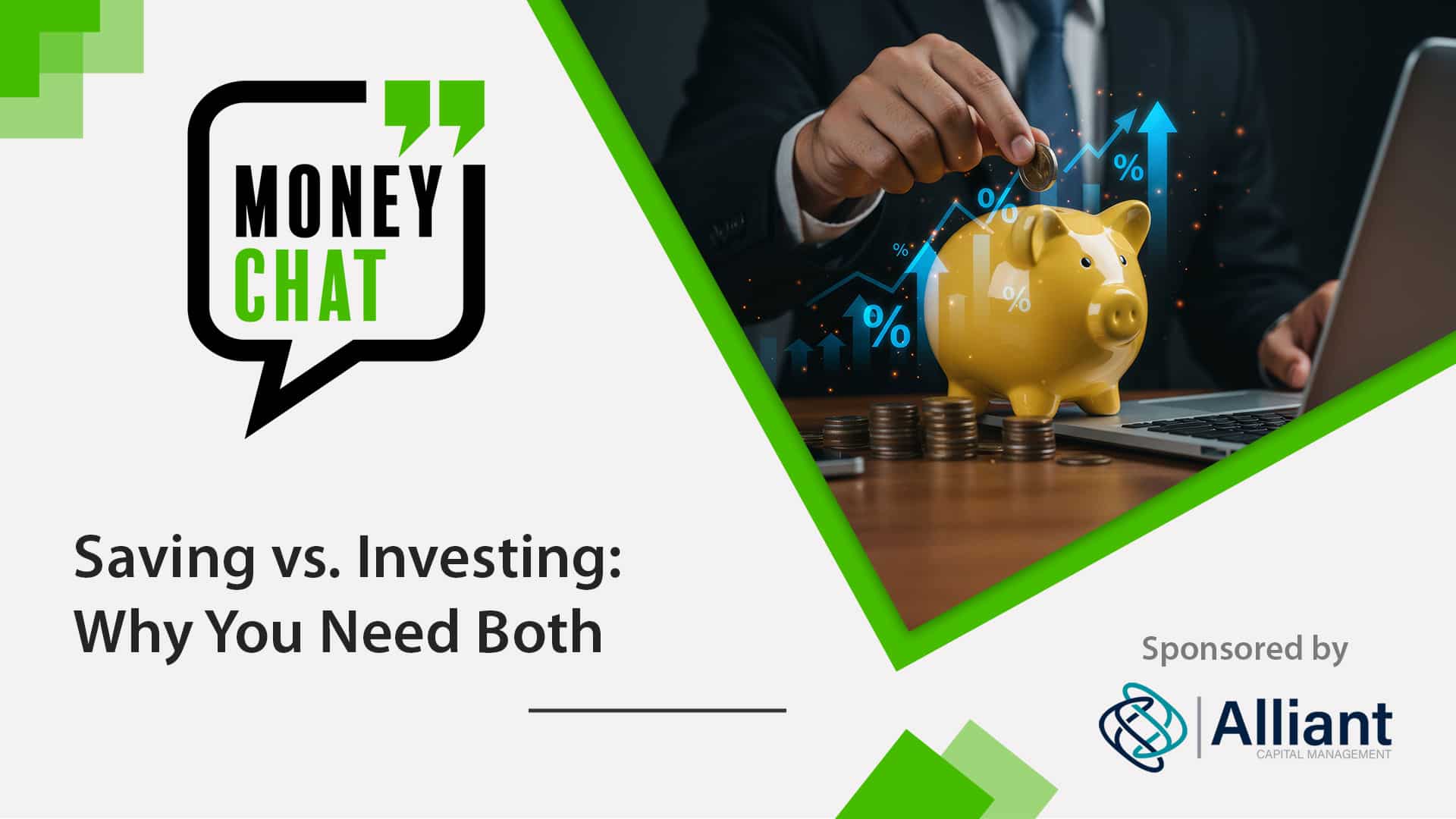
Understanding Consumer Credit
Sponsored by Plaza Services, LLC
It’s important for consumers to protect and wisely manage their credit. Understanding the benefits of good credit and the disadvantages of poor credit can lead to healthier spending and borrowing habits. When considering a new line of credit, consumers should think about the long-term sustainability of a payment schedule and whether their ability to repay the loan will help or hinder their credit scores and affect their ability to borrow in the future. Having an awareness of the advantages of performing credit, disadvantages of non-performing credit, and the different stages within the credit cycle can help consumers to make healthier financial decisions that lead to long-term financial wellness.
Our goal in this Money Chat is to help you understand the credit cycle, benefits of good credit, drawbacks of bad credit, and how financial decisions can impact your credit score and overall financial health.
Why is credit important?
Credit is important because it gives access to loans at better interest rates for purchases and big-ticket items like cars, houses, and higher education tuition.
Having good credit means that you have an established credit history with 100% on-time repayment. Good credit makes borrowing money easier and helps you to get approved for loans and other lines of credit as well as qualify for better interest rates.
On the other hand, bad credit indicates that you have had difficulty paying back the money you have borrowed or that you have not been able to pay it back on time. Bad credit makes lenders less likely to loan you money or extend a line of credit which makes buying large-scale items like a car or house more difficult and more expensive. It also makes it more difficult to get a credit card, qualify for loans, and get a lower interest rate.
What are the benefits of good credit?
- More loan choices.
- Easier to get approved for loans.
- Qualify for better, or lower, interest rates.
- Easier to borrow money for large-scale purchases such as homes, cars, etc.
What happens if I have bad credit?
- Fewer loan choices.
- More difficult to qualify for credit cards.
- Pay higher interest rates.
- More difficult to buy a car, house, etc.
Does it matter if I have no credit?
- No bank loan options.
- Difficult to qualify for credit cards.
- Pay higher interest rates.
What is a credit cycle?
The credit cycle is the increase (expansion) and decrease (contraction) of access to credit by borrowers over time.
How is the availability of credit determined?
The availability of credit, or willingness of creditors to lend money, is tied to the risk each borrower represents. Lending is a risk vs reward probability. The more likely a borrower is to repay the lender, the more credit and better credit they may extend to the borrower. Borrowers with higher credit scores represent a higher probability the lender will be repaid and this creates a willingness for creditors to increase borrowing.
What is important to know about the consumer credit cycle?
Consumers need to be aware of the processes associated with obtaining credit as well as the ramifications of non-payment. The stages listed below outline the process of an account from origination through the consequences that can occur after an account becomes past due.
- Application– An application is a request for the extension of credit. When consumers want a loan, a line of credit to make a large purchase, or open a credit card, they must get lending approval from creditors. An application can be completed orally or in writing. Information that is requested from creditors is regulated by laws such as the Truth in Lending Act that provides consumer protections and transparency.
- Underwriting- After a borrower submits an application for credit, it goes through the underwriting process. Underwriting is an official verification process through which creditors gather information and assess the worthiness or risk of a potential borrower. During this process, a borrower’s identity, residential history, income, employment status, debts, credit history, collateral, debt-to-income ratio, and more are analyzed to estimate the borrower’s ability to repay and the stability of their financial profile.
- Performing vs. Non-Performing Accounts– A performing line of credit or loan is one on which the borrower has historically made payments on time. Borrowers must make at least the monthly minimum payment before the due date to remain performing. Alternatively, a non-performing line of credit or loan is one on which the borrower has been late on making payments and may be near default (missing payments).
- Delinquency- When opening a line of credit, borrowers agree that outlines how payments must be made to remain on time, in good standing, and keep the account open. When consumers are a couple of days late with payments, it will not put the account into delinquency, but the account holder may incur fees. However, when payments are more than 30 days late, serious consequences can occur. Once the account has been delinquent for 30 days, your interest rate will be raised to the penalty rate which can remain in effect indefinitely. When payments are 90 days late, the account is considered non-performing and the delinquent status can be reported to the credit bureaus to be included in your credit report. At this point, the creditor may also suspend or revoke the account.
- Charge-Off- When a balance remains delinquent, the account is closed and charged off. It is most common for this to happen when payments are 180 days past due for credit cards, but it may be only 60-90 days for other types of loans. After charge-off, a borrower no longer has the opportunity to bring the account current by catching up on late payments and fees and the creditor may choose to send the debt to collections. When an account is charged off, it will have a significant negative impact on your credit score.
- Judgment– When a borrower doesn’t repay a debt, the creditor can pursue legal action to recover delinquent funds and fees. A judgment is an order that is issued by a court of law; it is public record and visible to anyone. With a judgment, creditors can collect money owed through wage garnishments, liens, and more. State laws determine how much and by what means a creditor can collect from you and they vary from state to state.
- Statute of Limitations- The statute of limitations is the limited amount of time that creditors or debt collectors have to take legal action in their attempts to recover a debt. The statute of limitations varies based on the type of debt and the state or jurisdiction. The statute of limitations has nothing to do with how long an unpaid debt remains on your credit report, but consumers should be aware that there are legal ways that the statute of limitations clock can be restarted.
It is important for borrowers to remain aware of their financial situation. This can be done by actively monitoring credit reports and making careful, informed decisions about
borrowing. Many people face financial crises at different points in their lives which can lead to difficulties with paying bills and maintaining good credit. When faced with a difficult financial situation, it is wise to take control by analyzing income, tracking expenses, creating a realistic budget, and if necessary, reaching out to creditors to discuss options.
Additional Resources
For more information about the laws and regulations that govern consumer lending and the collection of debt as well as access to additional consumer financial resources, please visit the Receivables Info Resources Page.
Have an idea for a Money Chat topic?
We want to hear from you! If you have a suggestion for a future Money Chat topic, please email us at [email protected].
Thank you to our Sponsor
This article was sponsored by Plaza Services, LLC, a nationally licensed, professional receivables management firm located in Atlanta, GA. Plaza Services is a Certified Receivables Business (CRB) by Receivables Management Association International and specializes in the acquisition and servicing of consumer and commercial portfolios. They deliver quick portfolio evaluations, seamless transaction execution, and clear accountability after the sale. As SOC 2 certified receivables management firm, Plaza Services is committed to the security, confidentiality, and safety of consumers’ information.
The information contained in this article is meant to serve as general guidance for consumers and not meant to serve as comprehensive financial advice. For questions about your individual circumstances, finances, or accounts, please contact your creditor(s) and/or financial advisor directly.







